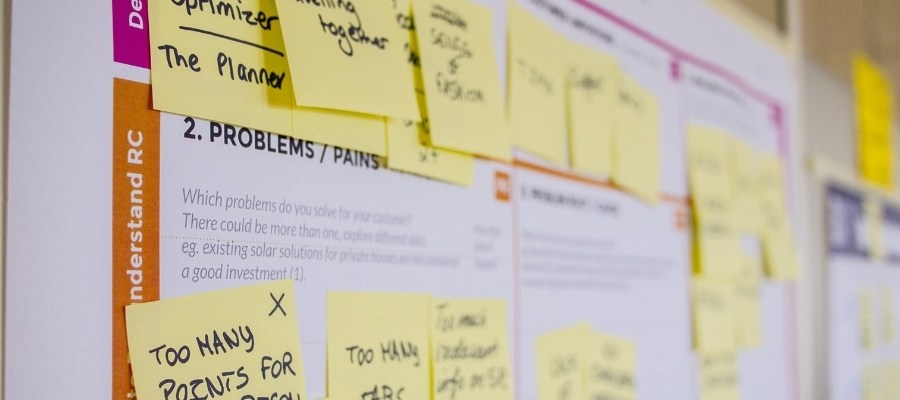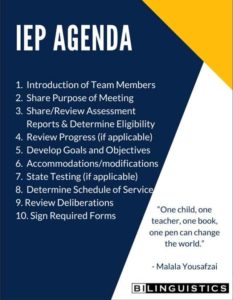IEP Woes
I had my first IEP meeting in the winter of 2003. My teacher was running late, my administrator could not be found and the parent, an attorney, pulled out books to refute her child’s ineligibility for speech services. Since my inaugural meeting, I quickly learned what makes for an effective IEP meeting:
5 Tips for an Effective IEP Meeting
Agenda, Please
We all know that there is a lot to talk about at IEP meetings. By law, we need to make sure we discuss all topics. Having an agenda on hand is helpful. It lets us know where we are going, and it keeps us on track. If you need one, we’ve got one right here for you to download. IEP Agenda
Prepare, Prepare, Prepare
Sure, the meeting is when all parties come together. However, if you do the leg work before the meeting, your chances of having a positive outcome will definitely increase. First, talk to the teacher and family. A few weeks before the meeting, I talk to the child’s teacher and family about progress (“How did he do this past year with his sounds/language/social skills?”). In the same conversation, I talk about my recommended goals (and send home a draft of the goals) and recommended schedule of service. So, when the meeting actually takes place, we 1) already have an idea about family input (e.g., want more speech-language time) and 2) simply walk through the formal paperwork.
Talk About Graduation
In an IEP meeting, we typically talk about the goals for the annual IEP year. Taking a brief moment to acknowledge what graduation from special education services “looks like” will also be beneficial. As an SLP who has attended initial/admit IEPs for 3-year-olds who qualify for services, talking about dismissal helps on many levels: giving the family an understanding of eligibility for school-based services, 2) explicitly stating the goal (working toward the least restrictive environment) of special education services and 3) acknowledging expectations for the students’ educational needs.
Strengths Driven
I have the privilege of working in many educational settings. I must say that the manner in which IEP meetings were run at KIPP Public Schools (Obras Campus) reigned. Prior to the IEP meeting, an email was sent out with the time and date of the meeting. In the body of the email was a statement that read “Please come prepared with student strengths.” At the beginning of the meeting, each IEP team member shared the strengths of the student. Of course, we talked about specific goals and objectives that required differentiated support for the student. However, the focus was placed on the child’s successes and superpowers.
Family Priorities and Needs
Family-centered practices mean focusing on the needs of the family. This means listening and acknowledging their concerns. Trust is earned when we listen with the goal of understanding. The family also needs to think about life-long goals and investments. You all meet once a year to talk about the student’s educational needs, and the family is an integral member of the decision making progress. Remember, the family is the (insert child’s name here) expert, and we are the educational experts. Together, with trust, the student’s needs can best be supported. In my experience, at the end of the meeting, 1) asking how the family feels about the decisions made in the IEP meeting and 2) taking the time to listen yields effective outcomes.
What tips do you have for effective IEP meetings? We would love to grow our list.
Resources
For our bilingual SLPs, here are 8 Spanish Translations for IEP Meetings.
Here is an ASHA article on 5 Tips for an IEP Meeting
Facilitated IEP meetings help a group improve how it identifies, discusses, solves problems & makes decisions. Here is Region 13 Education Service Center’s page on facilitating IEPs.





